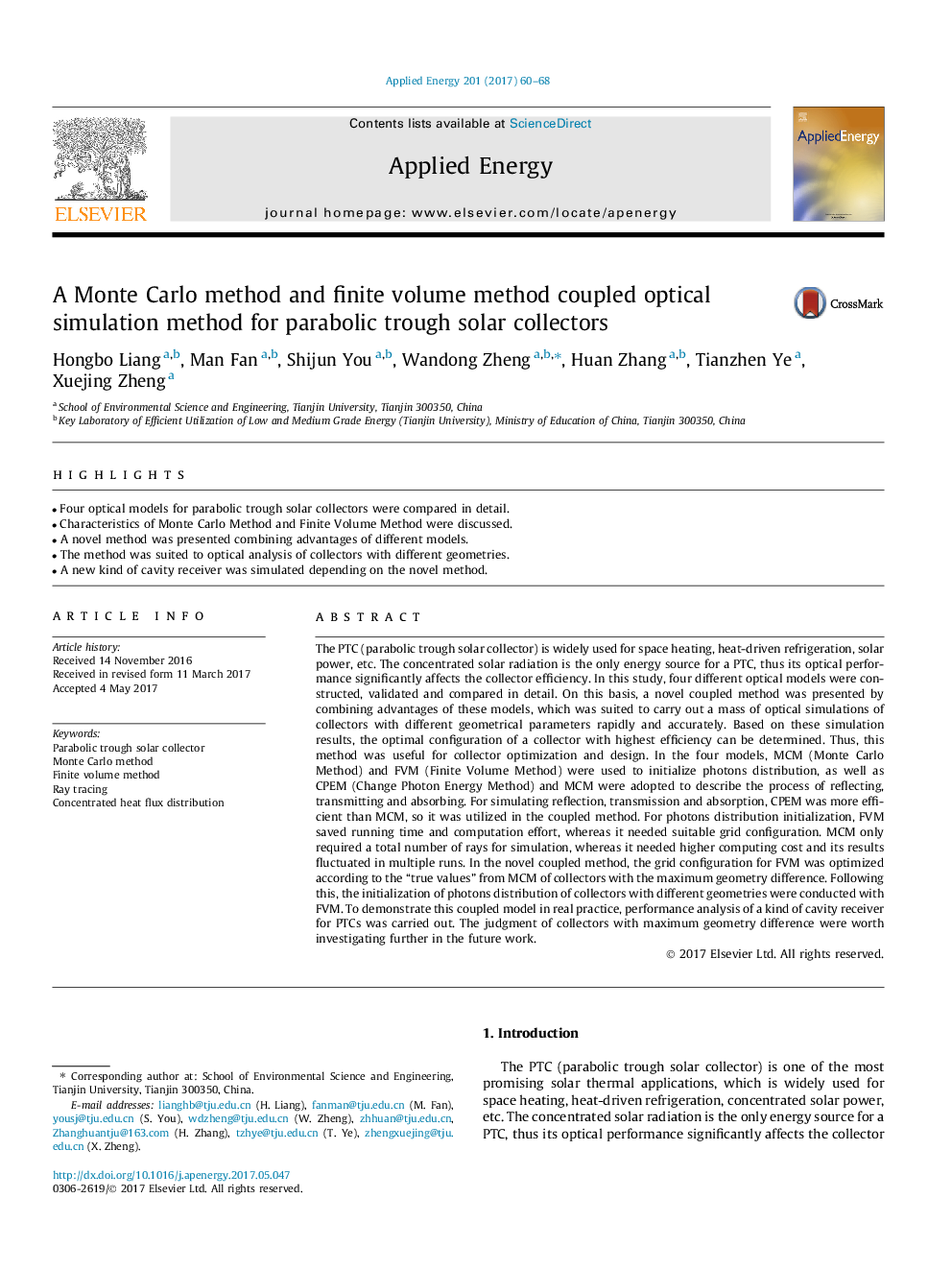| کد مقاله | کد نشریه | سال انتشار | مقاله انگلیسی | نسخه تمام متن |
|---|---|---|---|---|
| 4916002 | 1428089 | 2017 | 9 صفحه PDF | دانلود رایگان |
عنوان انگلیسی مقاله ISI
A Monte Carlo method and finite volume method coupled optical simulation method for parabolic trough solar collectors
ترجمه فارسی عنوان
یک روش مونت کارلو و روش حجم محدود روش شبیه سازی نوری برای گرداب های خورشیدی به صورت پارابولیکی
دانلود مقاله + سفارش ترجمه
دانلود مقاله ISI انگلیسی
رایگان برای ایرانیان
کلمات کلیدی
گرداب گرداننده پارابولیک، روش مونت کارلو، روش حجم محدود ردیابی اشعه، توزیع شار حرارت گرما،
موضوعات مرتبط
مهندسی و علوم پایه
مهندسی انرژی
مهندسی انرژی و فناوری های برق
چکیده انگلیسی
The PTC (parabolic trough solar collector) is widely used for space heating, heat-driven refrigeration, solar power, etc. The concentrated solar radiation is the only energy source for a PTC, thus its optical performance significantly affects the collector efficiency. In this study, four different optical models were constructed, validated and compared in detail. On this basis, a novel coupled method was presented by combining advantages of these models, which was suited to carry out a mass of optical simulations of collectors with different geometrical parameters rapidly and accurately. Based on these simulation results, the optimal configuration of a collector with highest efficiency can be determined. Thus, this method was useful for collector optimization and design. In the four models, MCM (Monte Carlo Method) and FVM (Finite Volume Method) were used to initialize photons distribution, as well as CPEM (Change Photon Energy Method) and MCM were adopted to describe the process of reflecting, transmitting and absorbing. For simulating reflection, transmission and absorption, CPEM was more efficient than MCM, so it was utilized in the coupled method. For photons distribution initialization, FVM saved running time and computation effort, whereas it needed suitable grid configuration. MCM only required a total number of rays for simulation, whereas it needed higher computing cost and its results fluctuated in multiple runs. In the novel coupled method, the grid configuration for FVM was optimized according to the “true values” from MCM of collectors with the maximum geometry difference. Following this, the initialization of photons distribution of collectors with different geometries were conducted with FVM. To demonstrate this coupled model in real practice, performance analysis of a kind of cavity receiver for PTCs was carried out. The judgment of collectors with maximum geometry difference were worth investigating further in the future work.
ناشر
Database: Elsevier - ScienceDirect (ساینس دایرکت)
Journal: Applied Energy - Volume 201, 1 September 2017, Pages 60-68
Journal: Applied Energy - Volume 201, 1 September 2017, Pages 60-68
نویسندگان
Hongbo Liang, Man Fan, Shijun You, Wandong Zheng, Huan Zhang, Tianzhen Ye, Xuejing Zheng,
